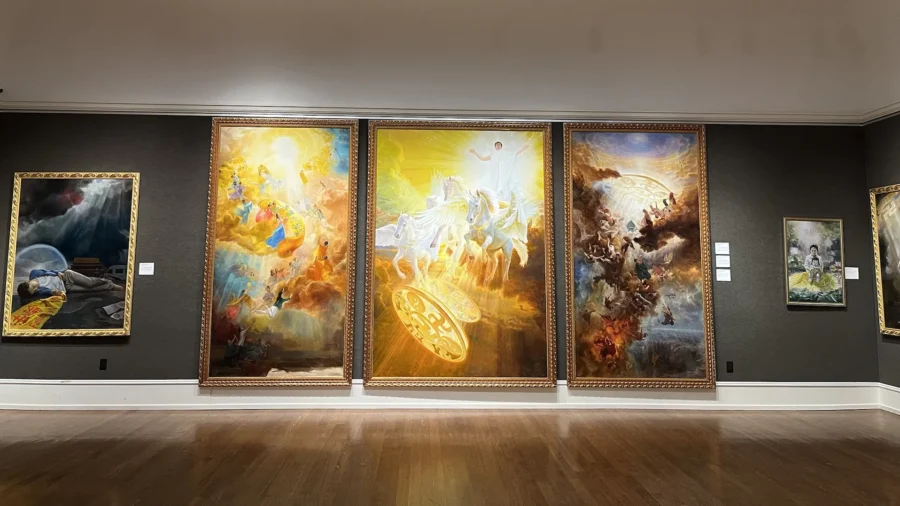NEW YORK—When you walk into the finalist exhibition of 6th NTD International Figure Painting Competition (NIFPC), you’ll find the wall furthest back bathed in a heavenly light.
On display through Jan. 19 at the Salmagundi Club in New York City is “The Infinite Grace of Buddha,” an eye-catching triptych almost nine feet high, submitted by a trio of artists from the same studio.
“We are all people of faith, and I wanted to depict something beyond just daily life,” said Shao-Han Tsai, whose initial, daring idea for a work to submit to the competition resulted in the three-paneled painting composed of dozens of figures.
It’s rare that artists will produce a work of this theme and scale today, but these artists felt it fitting for an event with the mission to restore “pure beauty, pure kindness, pure authenticity” in art.
Launched in 2007, NIFPC is a part of a series of cultural events aimed at reviving traditional culture. NTD, a sister media of The Epoch Times, stands for “New Tang Dynasty,” a reference to the golden age of ancient Chinese civilization.
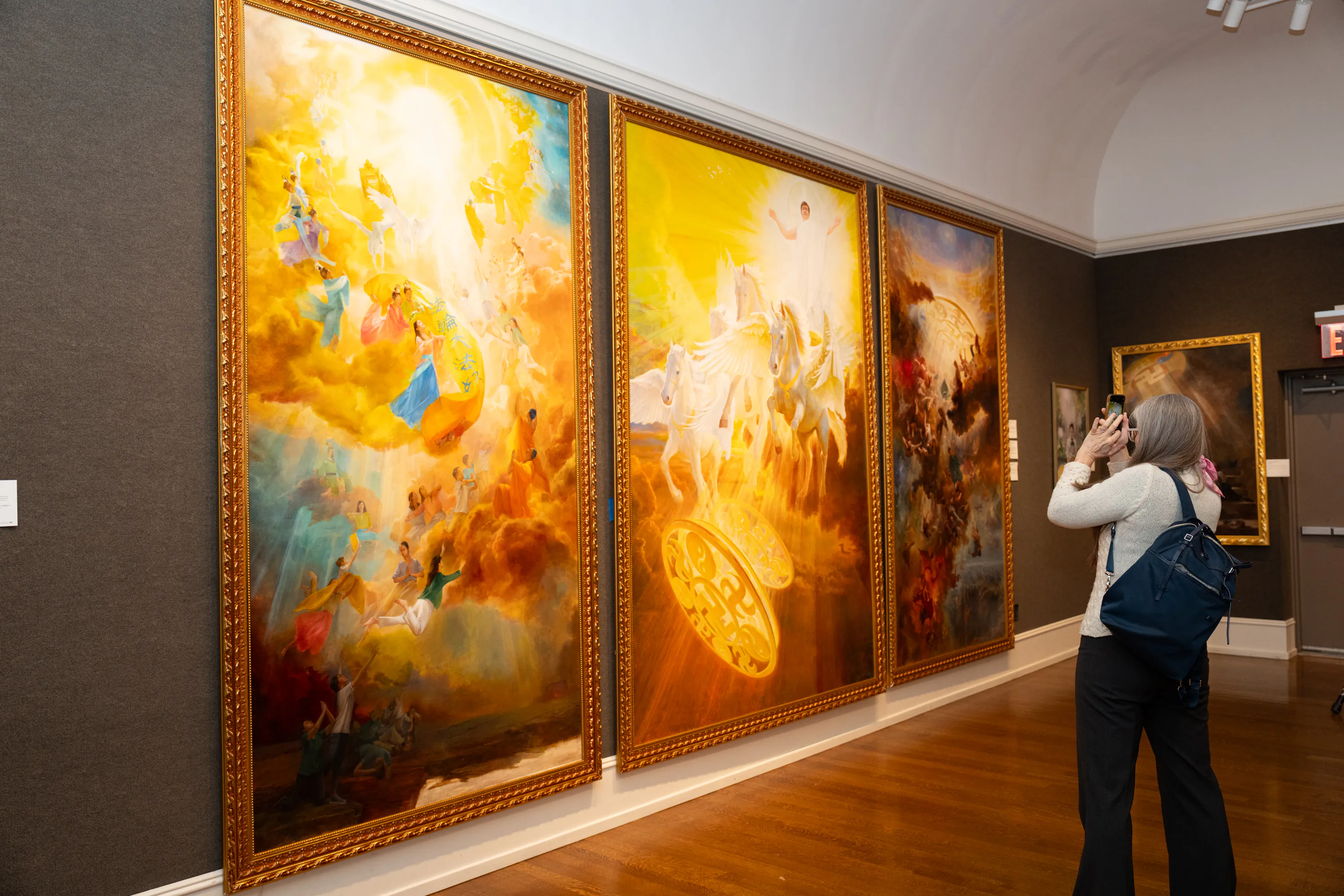
The Young Artists
Mr. Tsai, 26, painted the right panel of the triptych. His teacher Yuan Li then had the idea of painting the Creator as a complementary piece, and as the ideas developed, Mr. Tsai’s colleague Hung-Yu Chen joined the project with a third piece, on the left, to balance the overall work.
This was before the pandemic, Mr. Tsai recalled, and it’s been about five years since. He had intended it to be done in time for the 2019 competition, but the project would ultimately take about two years to complete.
Mr. Li was the first Gold Winner of the inaugural NIFPC. Mr. Tsai and Ms. Chen, now 25, had taken the same art class back in middle school, under Mr. Li, and their group of 14 classmates have stayed together throughout the years to paint at the same studio even as they have gone on to pursue separate career paths and studies in higher education.
Mr. Li did not attend the competition events in New York City this year, and it was Mr. Tsai and Ms. Chen’s first time in city, and first time participating in an international art competition. The two had flown out from Taiwan after casting their votes in the presidential election, and arrived just in time for the exhibition’s opening ceremony.
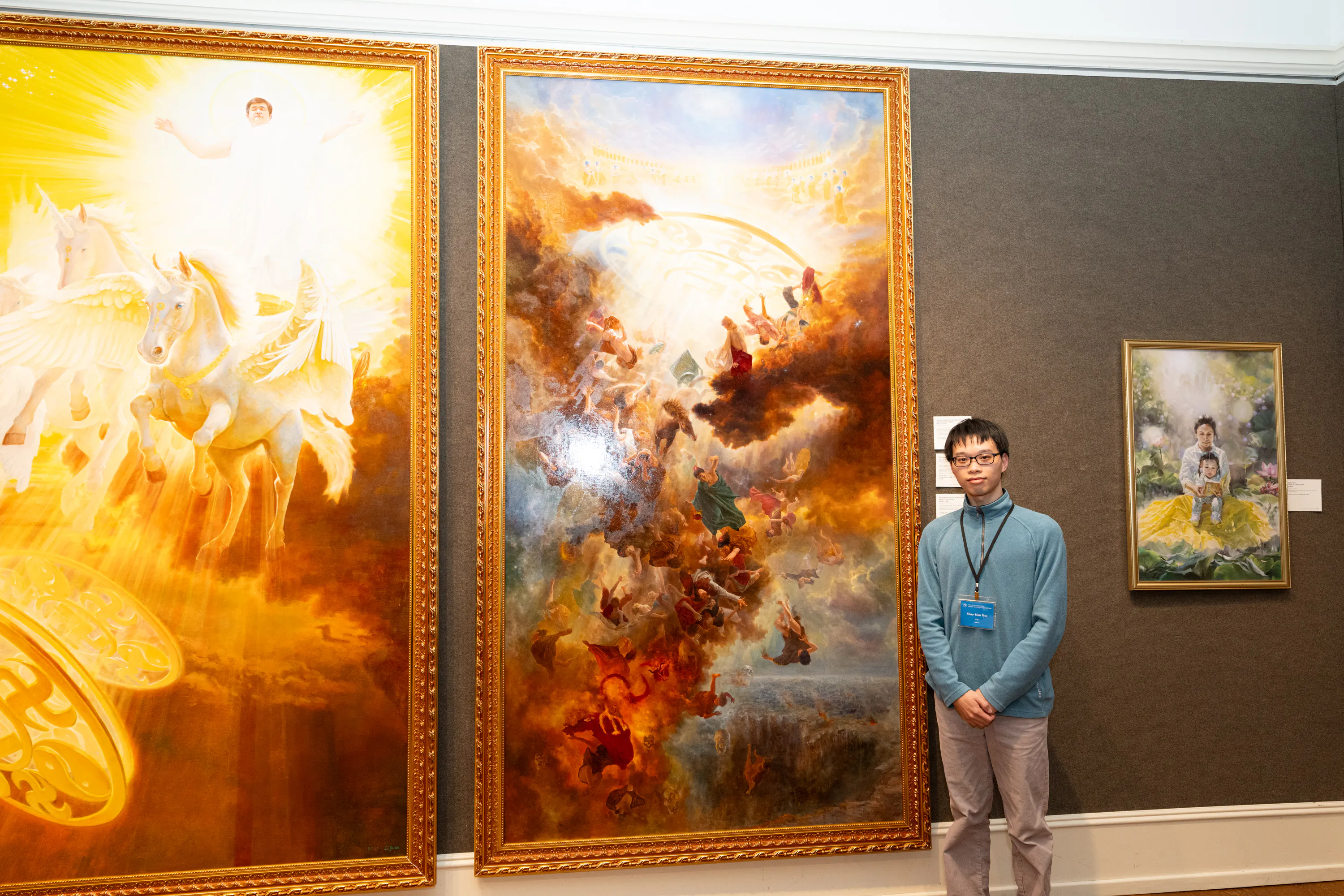
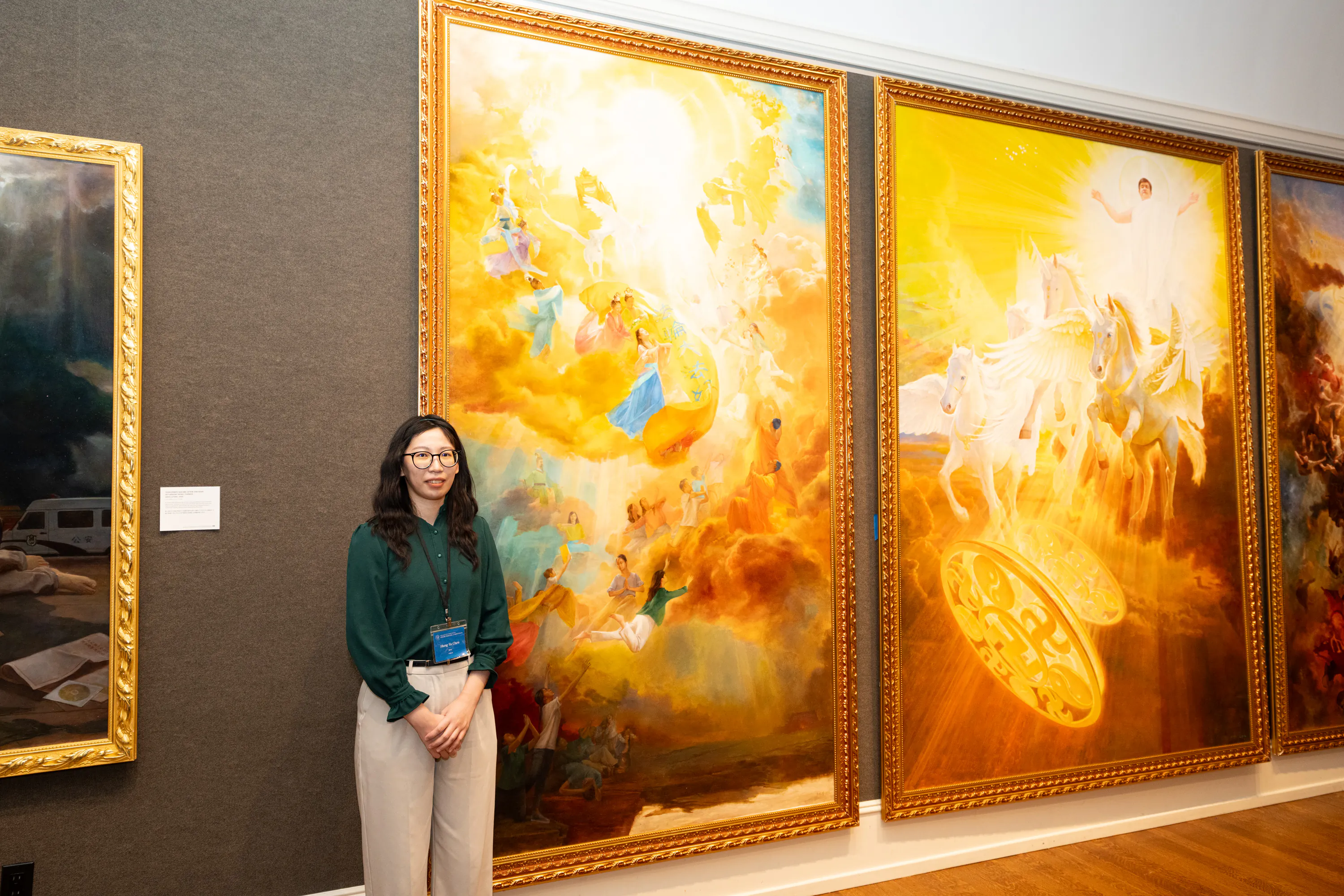
The Inspiration
“During the course of creating this work, I thought a lot about what I want to communicate. In the past, a lot of art depicted gods and heaven, from the ancient Greeks to stories of saints,” Mr. Tsai said. “So we thought, how can this apply to the 21st century?”
Mr. Tsai wanted to create something profound, something with meaning, and something through which he could share his own faith. So, he decided on something universal.
The cultures and peoples of both the East and West share stories about a divine Creator, he explained.
“This is a story we all share,” Mr. Tsai said. He had been inspired by the many scenes of heaven found on many Baroque chapel and palace ceilings, and of course Last Judgment scenes by artists like Michelangelo and Rubens.
On the right, Ms. Chen depicted the age-old belief that the righteous and faithful ascend to heaven.
Ms. Chen herself practices Falun Dafa, also known as Falun Gong, a spiritual meditation that teaches the three principles of truth, compassion, and forbearance, and featured the name and words in her painting.
“I was really inspired by the divine scenes you can find in a lot of ceiling frescos in Western art,” she said. “I hope that the viewers of the work can have a sense, and understanding, of good versus evil from this piece.”
Heavenly beings and people entering heaven are depicted in the upper portion of the painting, and in the lower portion, one can see people who have come to the newfound faith and those who regret missing the opportunity in their lifetimes.
Mr. Tsai is also a practitioner of Falun Dafa. He shared that, like Ms. Chen, he had grown up in a family with practitioners, but it wasn’t until around middle school that he considered, and chose, his own path in life. It was then that he made a choice to pursue art, and at the same time he realized a rich spiritual life was necessary to create art.
In Chinese, such spiritual practices are termed “cultivation”—of one’s character, or heart. Cultivation and art are much the same, Mr. Tsai said; one must work on oneself in order to create something that can inspire others.
Of course, many times he’s been reminded that the path he chose wasn’t an easy one. During the painting of the piece, for instance, there would be weeks at a time when he felt he was making no progress and wondered whether he had bitten off more than he could chew. Neither Mr. Tsai nor Ms. Chen had ever painted anything that big, nor arranged a composition with so many figures, each to be depicted from live models.
They also met with challenges they’d never encountered in their studies, such as how to depict heavenly light, which certainly isn’t something one can photograph or reference. Each of the artists went through 25 to 30 drafts, and Ms. Chen had to repaint her entire work after a mishap with her materials, and Mr. Li redid the entire background of his piece partway through the process. But it’s not every day one gets to share one’s beliefs with the world and give form to one’s vision, and remembering that renewed his determination to complete the celestial drama on canvas.
“Previously, my works were very much student works, and lacked the design and creative vision of a complete work. … This is the first time I’ve had the opportunity to show something I think you could really call a ‘creation,'” Mr. Tsai said.
“Today a lot of visual arts—film, animation—are really exciting; if the only thing I attempt is to stimulate viewers visually, well, heavenly scenes have already been done, you can’t really compete on impact there. So it was important to me to communicate something meaningful,” he said.
“I hope the work can help turn the viewer’s attention from their day-to-day life toward, instead, a more profound question of faith, life, and the meaning of life, and what we choose in life,” he said.
In Mr. Tsai’s right-most panel, it shows the opposite of Ms. Chen’s piece. Instead of moving toward heaven, beings are being cast down to the human world, and below.
The large, circular symbol in the upper portion of the painting is a “Falun,” which in Falun Dafa is a visual symbol of the universe, Mr. Tsai explained.
The universe goes through phases and cycles, and at the “destruction” phase, or what many cultures refer to as the end times, the cosmos is in disarray. Heavenly beings who have been corrupted are cast down, and in the lower portion of the painting, near the human realm, one can glimpse a burning symbol of a hammer and sickle, representing communism. This is an ideology that is anti-God in its foundation, Mr. Tsai explained, and he felt it appropriate to represent what is destroying humankind in the end of times.
But the universe does not end in destruction here; the Creator’s appearance heralds renewal and regeneration.
In both Ms. Chen’s and Mr. Tsai’s paintings, a bright light far above is all that suggests the presence of the Creator. In the center, largest painting, Mr. Li depicted his vision of the Creator, showing His infinite grace in the post-apocalyptic period.
“The sweeping compassion shines on the whole universe and brings salvation. Many peoples have passed down the belief that God and Buddha will come down to earth and the creator will save people, and at the same time, it is also about the ultimate battle between good and evil that transcends the secular level,” a description of the painting states.
The Work
Many of us won’t make it to the exhibition in New York before it ends on Jan. 19, but NIFPC has made the images available online:
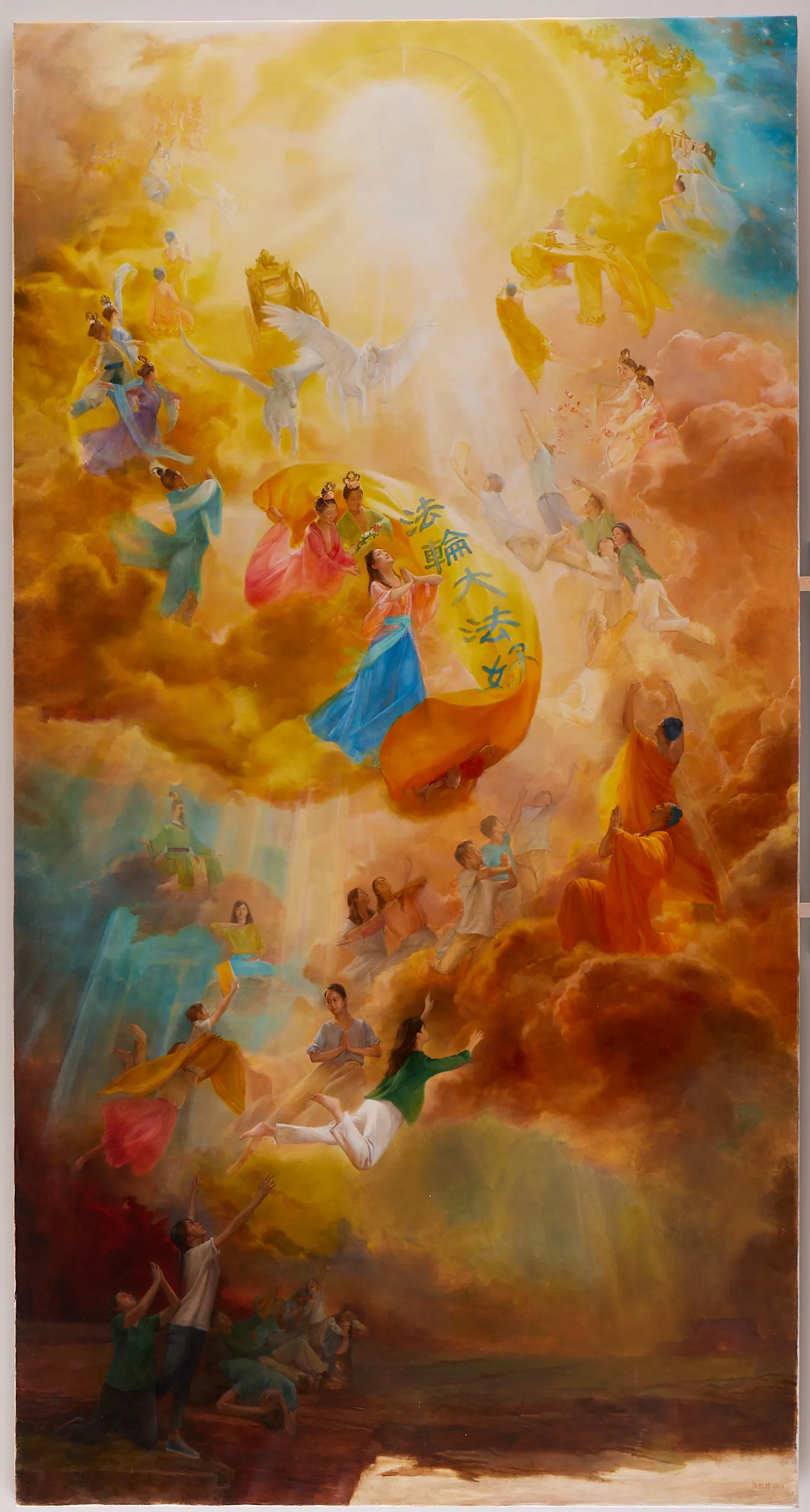
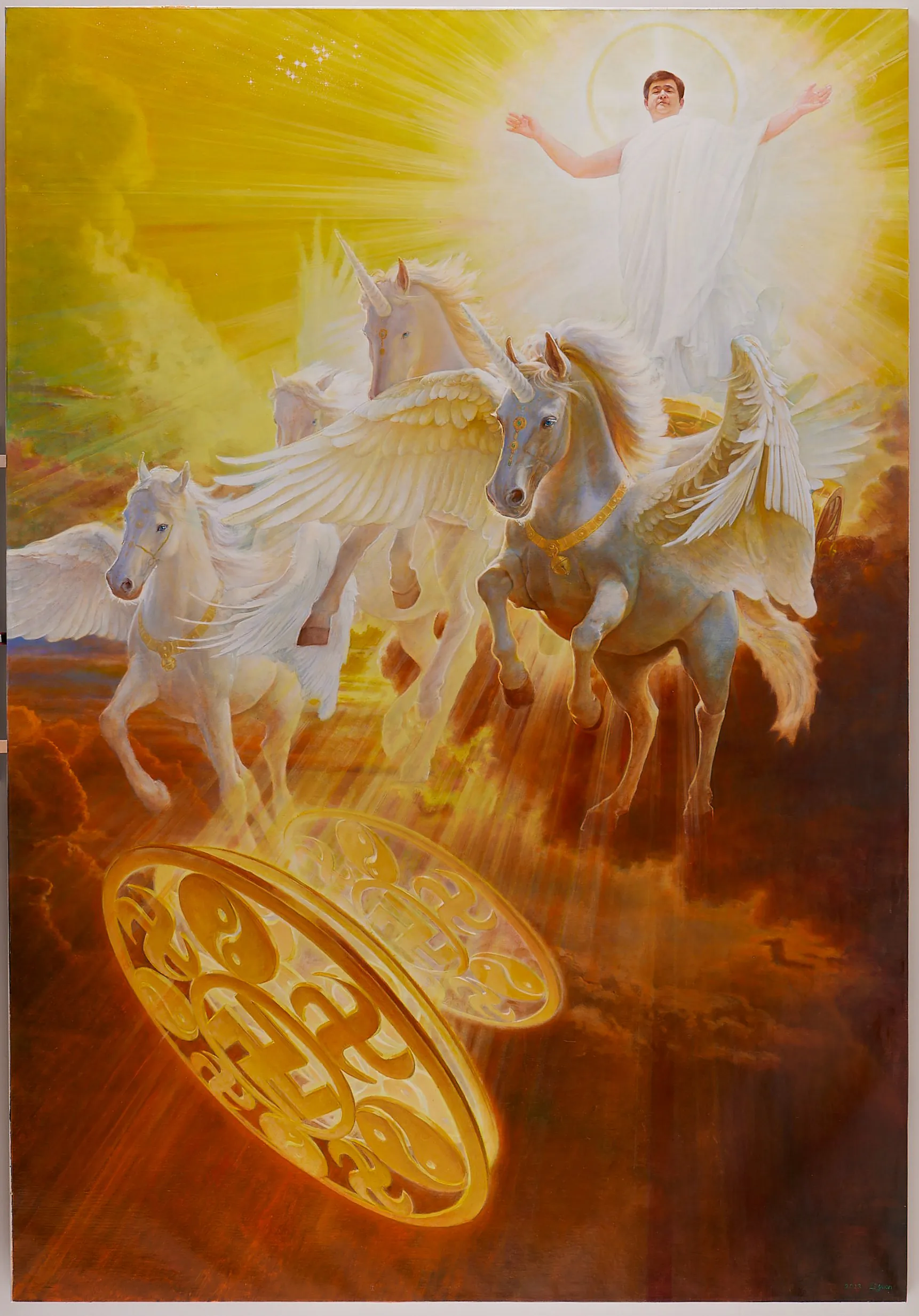
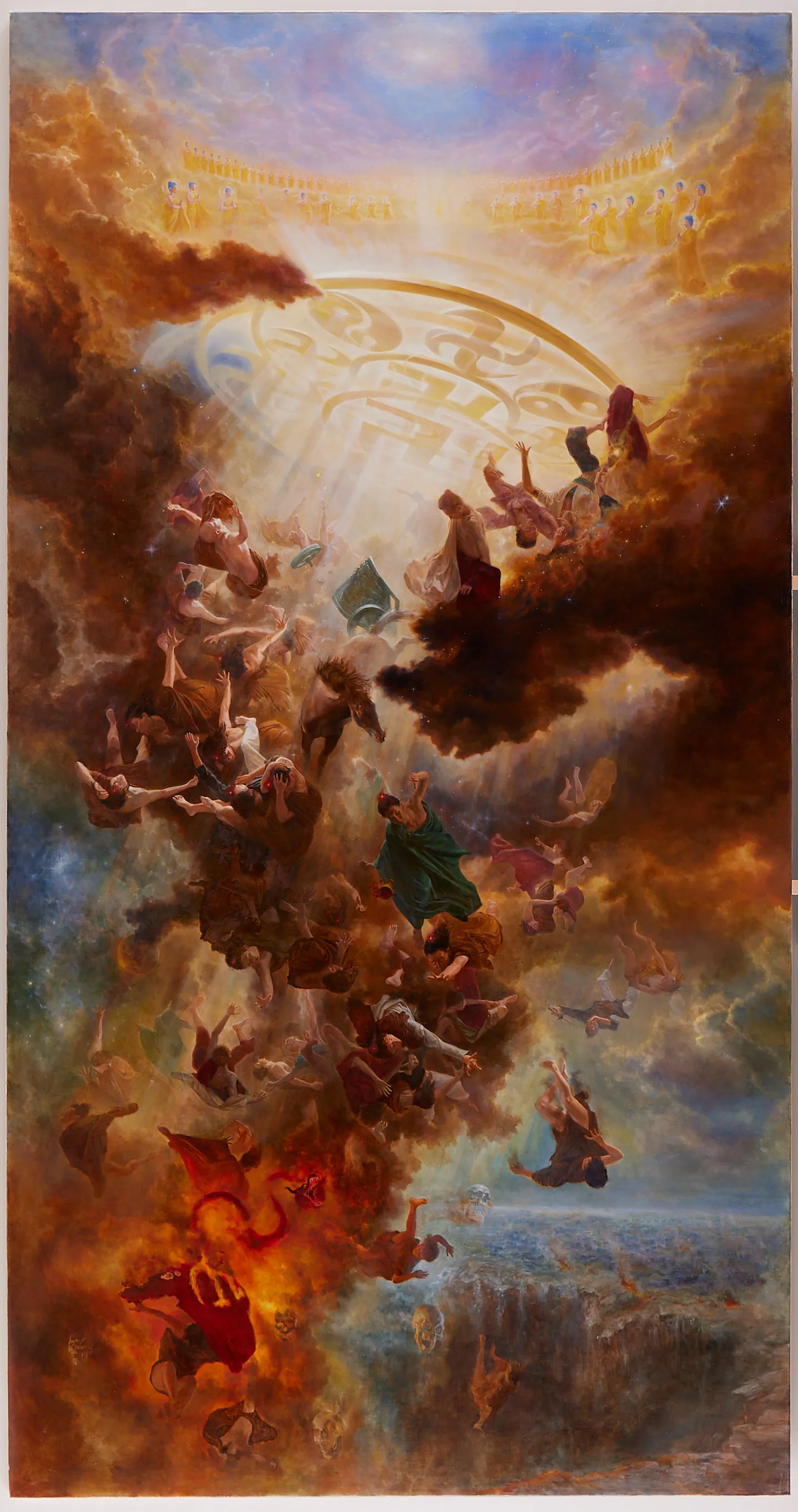
From The Epoch Times

